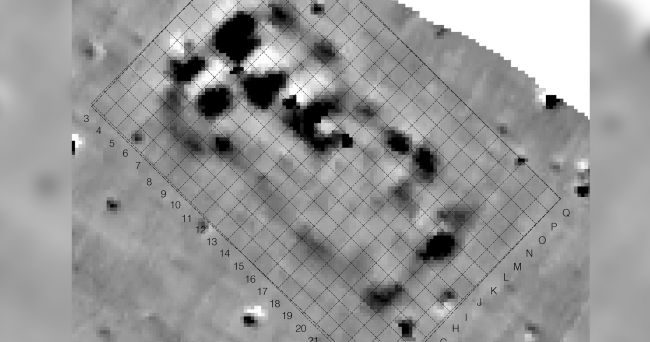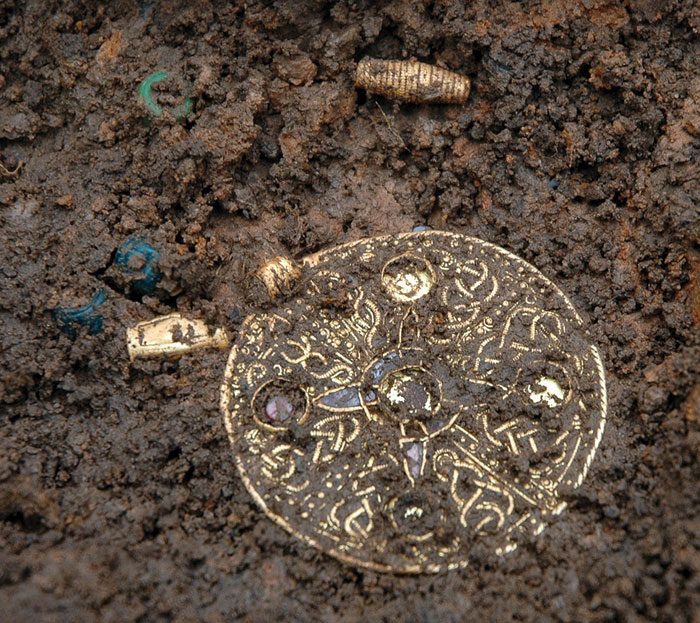OF THE
TIMES


Did 'the Anglo-Saxon migrations' take place, and were Romano-British leaders replaced by those of Germanic descent? Susan Oosthuizen's new book, The Emergence of the English, is a call to rethink our interpretations of the 5th and 6th centuries AD, reflecting on whether many of the assumptions we make about the period are actually supported by evidence. Interpretations that cannot be upheld should be discarded, she says, and all viable alternative interpretations should be explored for the strongest arguments to be identified. Chris Catling reports.In the early 1970s, cherished ideas about the character of Roman Britain were systematically challenged by a generation of archaeologists who rejected the simple story they had inherited of armed conquest, rule from Rome, and the conversion of primitive Celts - dressed in nothing but woad and a torque - into Latin-speaking, bath-addicted, villa-dwelling Roman citizens who dined off Samian platters, drank watered-down wine, and ate food flavoured with fish sauce. Instead, they insisted that Romanisation began long before the Claudian invasion of AD 43, that it had many regional variations, and that it took many different forms over the 350-year period of Roman occupation. But they also argued that much of Britain lay outside the main sphere of Roman influence, and that life for many people in Roman Britain changed little from what they had known before - and, yes, they continued to drink beer.
Until that point in time, the Britons had held control of post-Roman Britain, keeping the Anglo-Saxons isolated and suppressed. After the Romans were gone, the Britons maintained the status quo, living in towns, with elected officials, and carrying on trade with the empire. After AD 536, the year reported as the "death of Arthur", the Britons, the ancient Cymric empire that at one time had stretched from Cornwall in the south to Strathclyde in the north, all but disappeared, and were replaced by Anglo-Saxons. There is much debate among scholars as to whether the Anglo-Saxons killed all of the Britons, or assimilated them. Here we must consider that they were victims of possibly many overhead cometary explosions which wiped out most of the population of Europe, plunging it into the Dark Ages which were, apparently, really DARK, atmospherically speaking.See also:

Shortly before sunrise on Sept. 22, 1979, a U.S. surveillance satellite known as Vela 6911 recorded an unusual double flash as it orbited the earth above the South Atlantic. At Patrick Air Force Base in Florida, where it was still nighttime on Sept. 21, the staff in charge of monitoring the satellite's transmissions saw the unmistakable pattern produced by a nuclear explosion — something U.S. satellites had detected on dozens of previous occasions in the wake of nuclear tests. The Air Force base issued an alert overnight, and President Jimmy Carter quickly called a meeting in the White House Situation Room the next day.Carter wrote in his diary of the September 22, 1979 event: "There was an indication of a nuclear explosion in the region of South Africa - either South Africa, Israel using a ship at sea, or nothing," according to the report.
Those who were executed, sent to camps, shot and tortured number in the thousands and millions of people. Along with this, as a rule these were people with their own opinions. These were people who were not afraid to speak their mind. They were the most capable people. They are the pride of the nation.Or about what he said when he unveiled the memorial in the centre of Moscow?
This horrific past must not be stricken from the national memory - let alone justified in any way - by any so-called higher good of the people.One of Putin's advisory councils speaks against statues to Stalin quoting a government resolution that it's "unacceptable" to "justify the repressions" or deny that they happened. Paul Robinson has demonstrated the falsity of the "Stalin is back" here. It's nonsense.
Comment: See also: